I grow Swiss chard whole season long because it is one of the most delicious leafy green vegetables and it does not bolt in heat! Swiss chard comes in many beautiful colors and is very easy to grow. I cover it with netting and have no pests to deal with. Let me share with you how I grow my Swiss chard so you can grow it successfully too!
- Swiss chard is a cool-weather leafy green and therefore sow the seeds indoors in late winter or early spring about 6-8 weeks before the last frost.
- Swiss chard can withstand light frost and therefore the seedlings can be planted outdoors about 4 weeks before the last frost date.
- Prepare the soil by enriching it with organic matter like compost, well-aged animal manure, or worm castings.
- Swiss chard can be sowed directly in the garden 4 weeks before the last frost.
- Sow the seeds or plant the seedlings about 4-6 inches apart. Always harden your seedlings off before planting them outdoors.
- Keep the plants watered providing about 1 inch of water weekly.
- Fertilize Swiss chard with the fertilizer of your choice, following the directions on the packaging. Because Swiss chard is a leafy green, it grows well when fertilized with a nitrogen-rich fertilizer.
- Protect this delicious vegetable from pests by covering it with garden netting supported by hoops.
- Harvest once the leaves of the Swiss chard are of a usable size to you. They are delicious raw or sautéed with butter, garlic, and bacon!
- Save seeds from the Swiss chard plant, it might time some time. Swiss chard does not bolt in hot weather, unlike other leafy greens. It might take two seasons for the plant to mature and produce flower stalks. If needed, overwinter the plant so it can continue growing the next growing season if it has not bolted yet. Then next season, it will bolt, produce flower stalks, and go to seed. Harvest the seeds once the seeds are completely dry. Store in a dry, cool, dark place or use immediately.
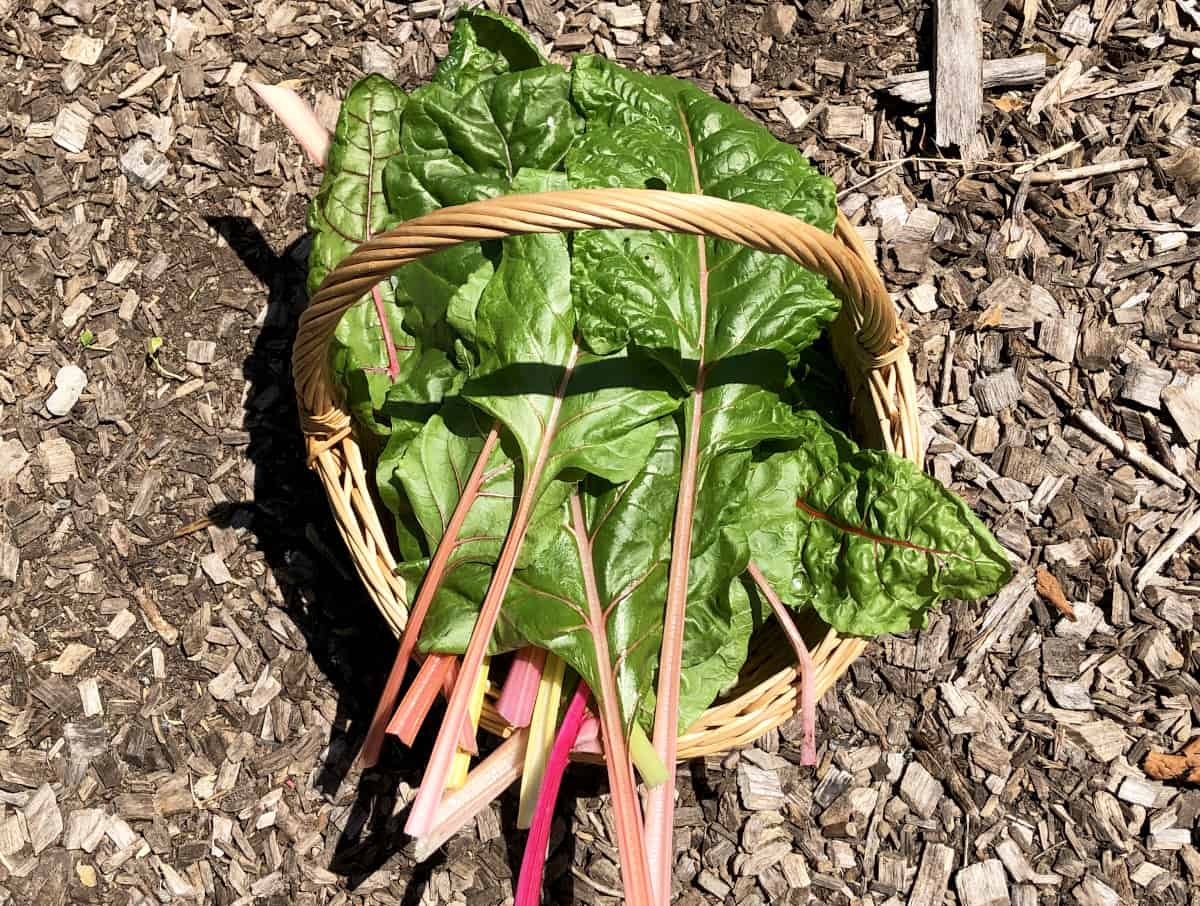
There is rarely a more reliable crop than Swiss chard. It grows so well for me, and would wholeheartedly recommend it to novice gardeners. It is a no-fuzz veg, that you can harvest the whole season long using cut-and-come-again method. I would recommend sowing this crop in early spring and then later summer for the fall garden if needed. Because Swiss chard is a very hardy vegetable you might need to sow only in spring and plants will yield till it dies off in winter. Swiss chard does well in cold and heat, it can be sowed and grown long before other vegetables are sowed or planted as seedlings. Swiss chard might be one of the earliest harvests from your garden each growing season.
Can Swiss chard grow in hot weather?
Absolutely, yes, Swiss chard can be grown in hot weather. It is very bolting resistant and withstands very low and very high temperatures.
I recommend growing Swiss chard to many gardeners who struggle to grow lettuce in summer. I also recommend it to novice gardeners who have no success growing brassicas or lettuce, because Swiss chard is very hardy, easy to grow and produces faster and yields more than broccoli, cabbage, or cauliflower, and is bolt resistant, unlike most lettuces.
Can Swiss chard get too much sun?
Too much sun on Swiss chard can leave sunburn on the plant. If you worry about Swiss chard leaves being sunburned, then plant Swiss chard in a partial shade, as this plant does grow well in partial shade.
I always grow my Swiss chard in partial shade because I have two raised beds in partial shade location and since this leafy green does well in partial shade, I just plant in there, along with lettuce, and garlic. Chard harvest is always abundant in my partial shade location.
Does Swiss chard grow all summer?
Yes, Swiss chard grows all summer. Harvest only the largest outer leaves and leave the small, inner young leaves intact, do not pull the plant out with the roots. Then come again to harvest in about two weeks. Using the cut-and-come-again harvesting method, Swiss chard will grow all summer.
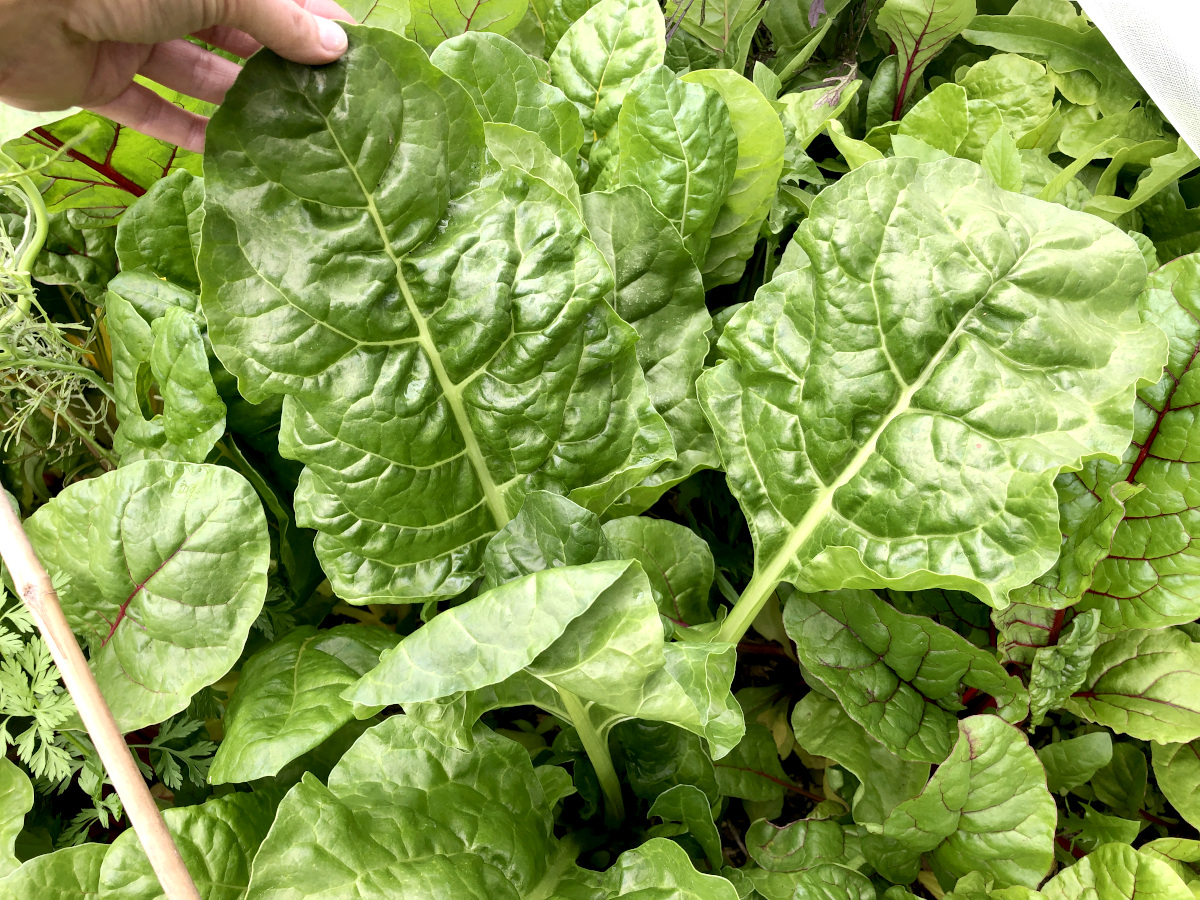
So far, I only sowed Swiss chard in early spring and the plants yielded during the whole growing season. I always harvest my chard using the cut-and-come-again method by picking the largest leaves with the largest stalks and leaving the small leaves for the next harvest. This way, I am able to sow only once per growing season and harvest it multiple times in the same season before the hard frost hits.
This year, I use Fox Farm, Grow Big 1-gallon concentrated fertilizer. I dilute it 10mill for 1 gallon of water and water with it. I fertilize every week or every other week, as I have time. You can also mix it stronger by 5 mills for large, fruiting, and established plants if needed. I use this fertilizer to feed my Swiss chard, and it does great!
Can you plant chard in July?
Yes, Swiss chard can be planted in July, because it does not bolt and is very heat tolerant.
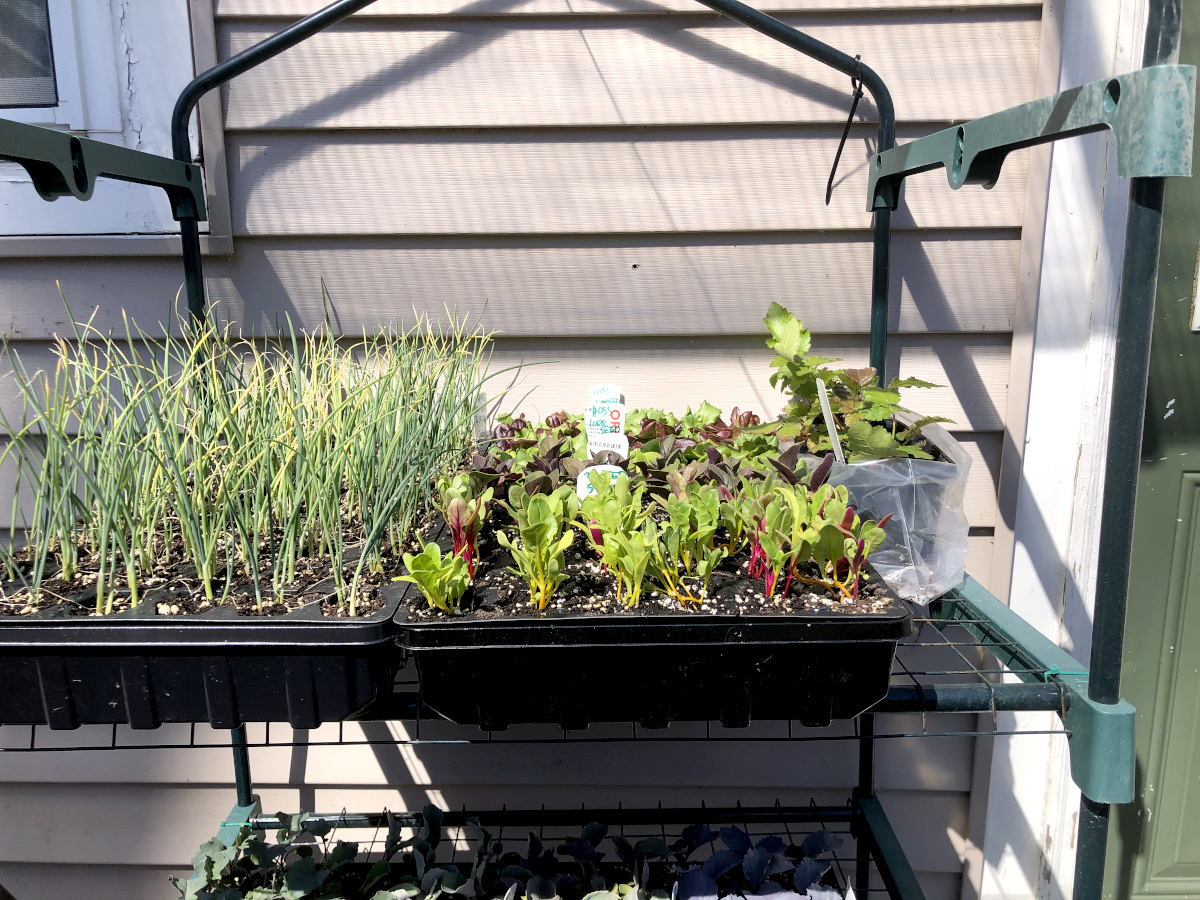
A GOOD READ: How to harden off seedlings
Can you eat Swiss chard after it has bolted?
Yes, Swiss chard can be eaten after it has bolted. Unlike other greens when they bolt develop a bitter taste, Swiss chard for the most part retains its regular flavor.
What is the lifespan of Swiss chard?
Swiss chard can grow up to two seasons if it overwinters. In the first season, the plant grows and matures. In the second season, it continues to grow and develops a flower stalk, blooms, and go it goes to seed. During both seasons Swiss chard can be harvested and eaten.
In my zone 6, I have never put an effort to overwinter Swiss chard, just because it is so easy to grow from seed. But this season, I am thinking to mulch the plants heavily with leaves and try to overwinter them because I would like to be able to harvest seeds!
Does Swiss chard grow back every year?
Swiss chard does not come back every year, it is a biennial plant, not a perennial. Swiss chard is a biennial, has a two-season lifespan, and comes back only once if it is able to overwinter, depending on the hardiness zone.
Can you plant Swiss chard close together?
Swiss chard can be planted together by a group of 2-3 plants. Space Swiss chard groups of 2-3 plants by 4-6 inches apart.
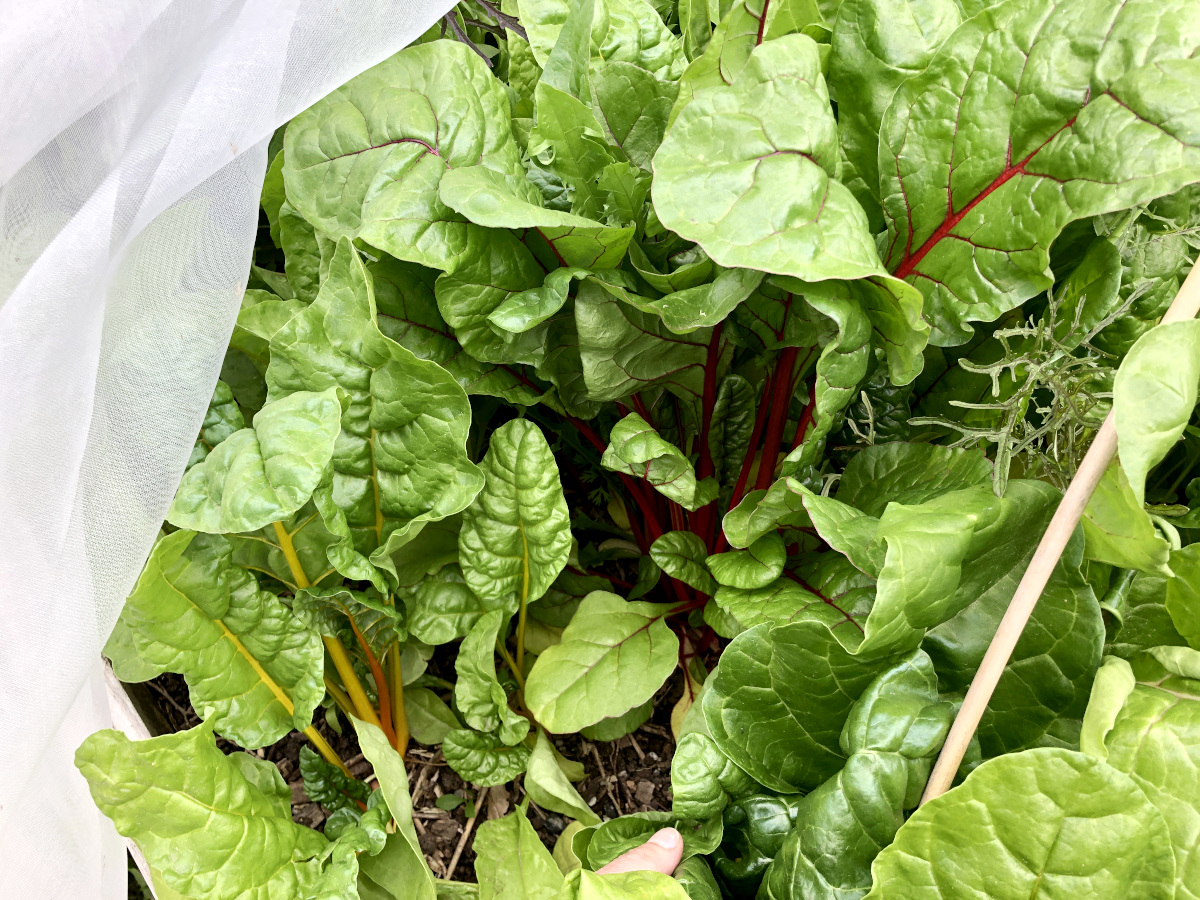
I always squeeze Swiss chard as much as I can. I grow in groups of multiple plants about 2-3 plants in one hole. I never actually count how many I have in one hole just eyeball it. I put about 3 seeds in one seed plug and let them grow without thinning. Then, I plant each seed plug spacing them about 4-6 inches apart. I am not worried at all about having my Swiss chard close together, because I harvest often and then let it grow again. I never had any trouble with spacing or airflow as it grows. The closer I plant, the more yield I get to harvest often.
A GOOD READ: What is multi-sowing, or clump growing
What month is best to plant Swiss chard?
Swiss chard can be planted from late winter such as February till late summer about 60 days before the first frost date. Many varieties will tolerate light frost.
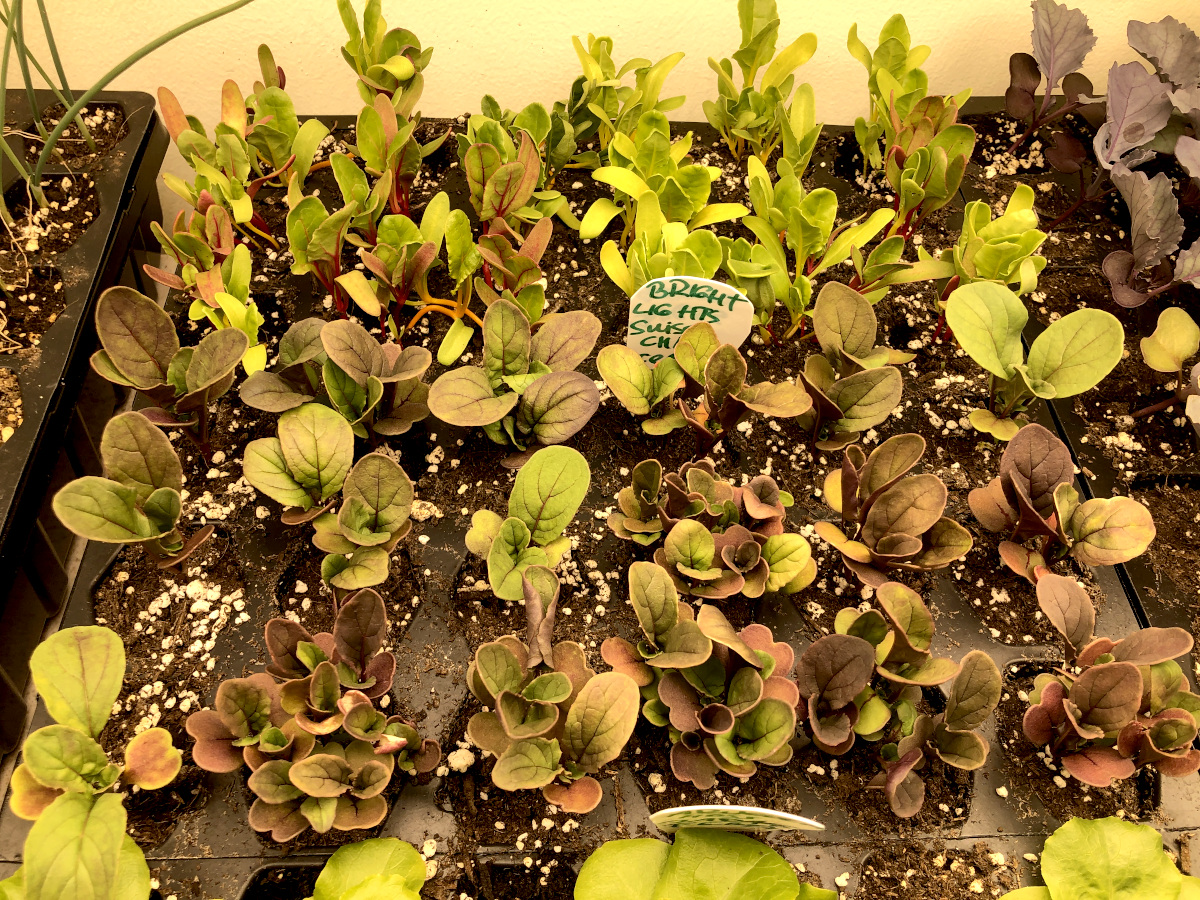
I always start seeds in February in seed trays, when the snow is still on the ground and we are still far from mid-May, our last frost date. I would say, anytime is a good time to sow and plant Swiss chard, a month before the last frost date and even two before the first frost date would work. Swiss chard is a hardy plant and can withstand light frost.
A GOOD READ: What vegetables to sow outdoors before the last frost?
Can I grow Swiss chard in containers?
Yes, Swiss chard is a great leafy green for containers, raised beds, or any garden setup.
Swiss chard planting depth
Plant Swiss chard seeds about ½ inch to 1 inch deep.
Does Swiss chard grow better in the sun or shade?
Swiss chard grows best in sunny locations but will do great in partial shade as well.
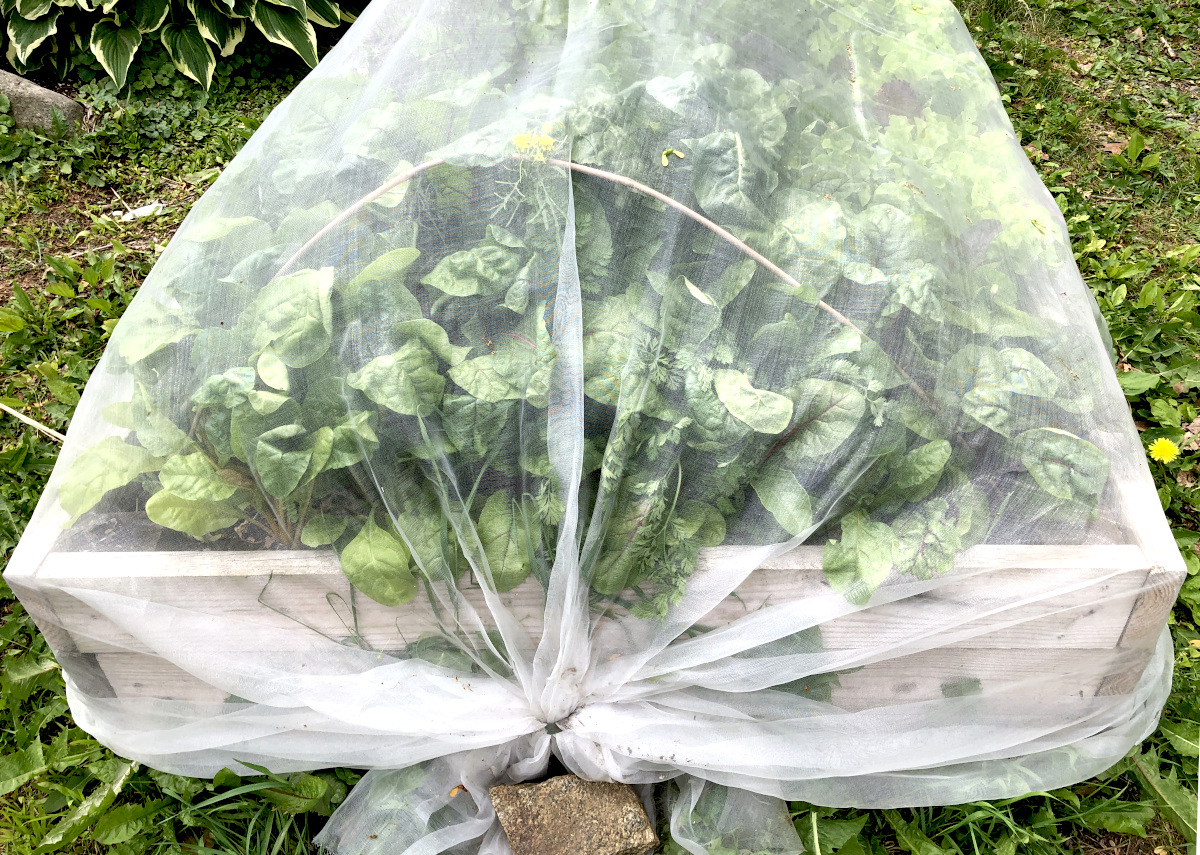
I grow my Swiss chard in a partial shade because that is the only space available and leafy greens do well there. I cover my Swiss chard and all leafy greens with garden netting supported by hoops to protect them from cabbage moths, caterpillars, and wildlife like wild rabbits, deer, and such. Covering leafy greens with a netting helps me to keep my leafy greens protected and remain as clean as possible. I have minimum residues and insects in my water after washing my leafy greens. Covering is a win-win for me and all of my leafy greens. I use this netting because it is sturdy, you can choose any size you like and cut to wanted lengths and shapes. This one lasts me several growing seasons.
Bright lights or rainbow Swiss chard is my favorite to grow as it comes in a variety of colors that just look stunning in the garden as well as on the plate.
How to prevent seeds from being eaten
How to start seeds and care for seedlings

